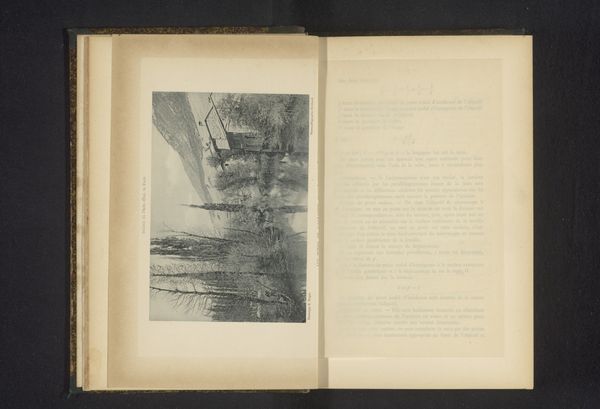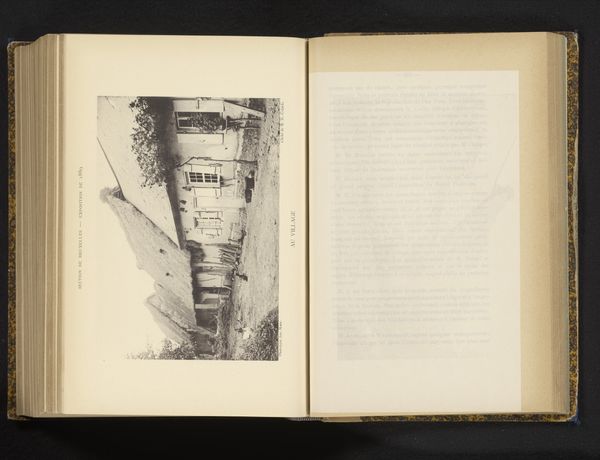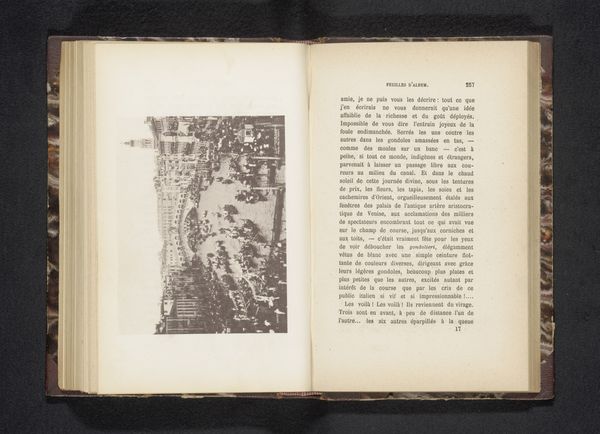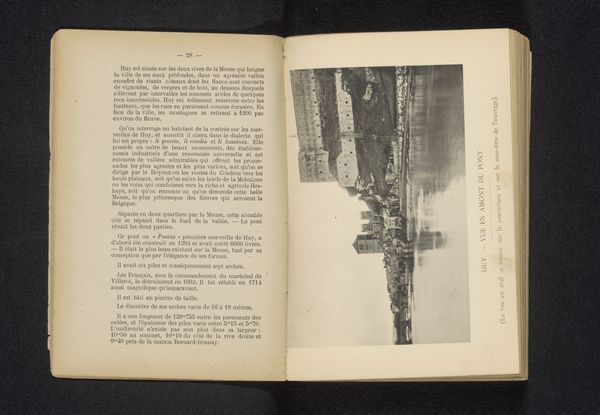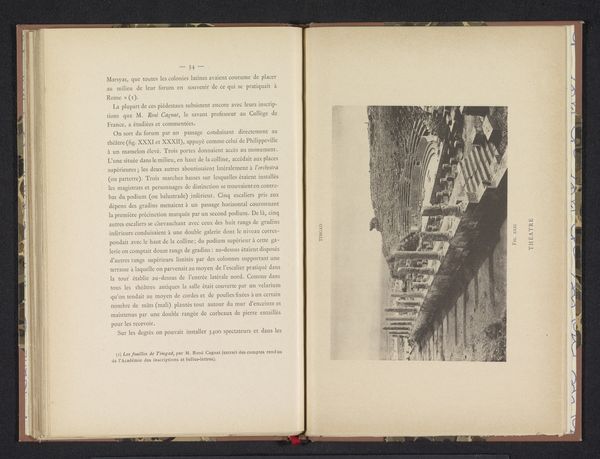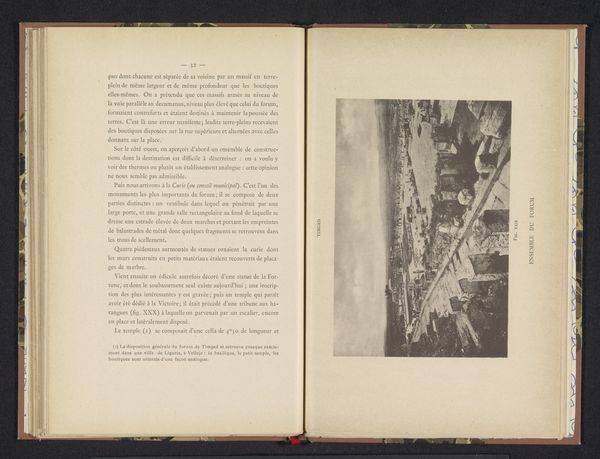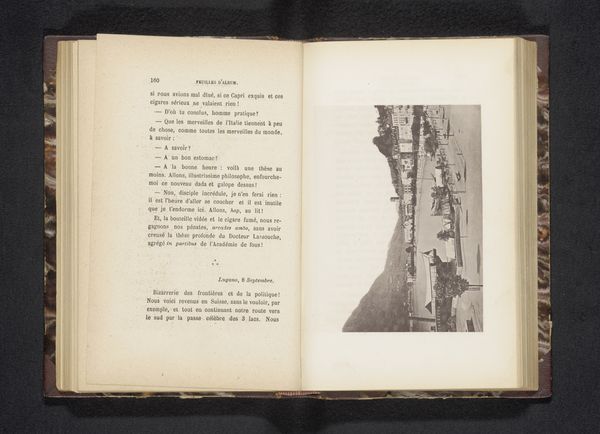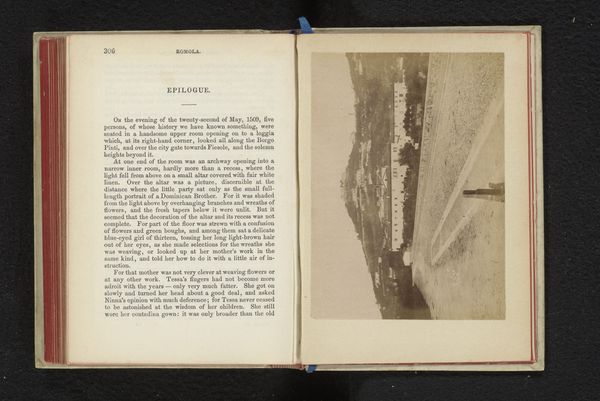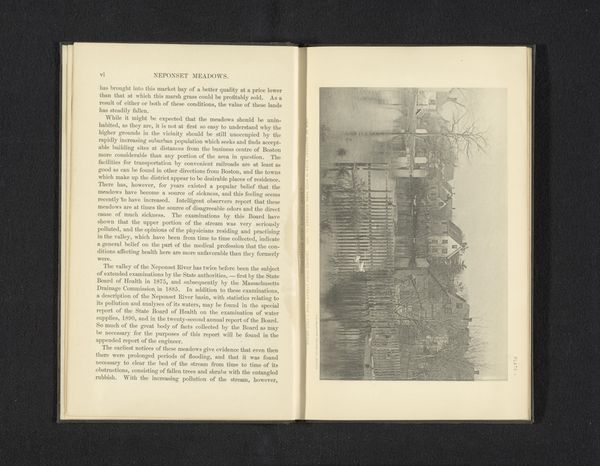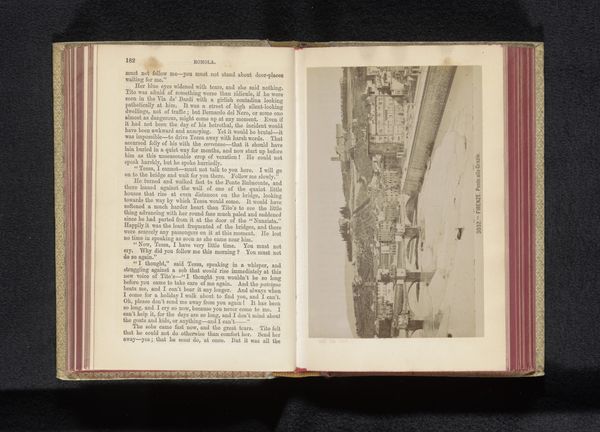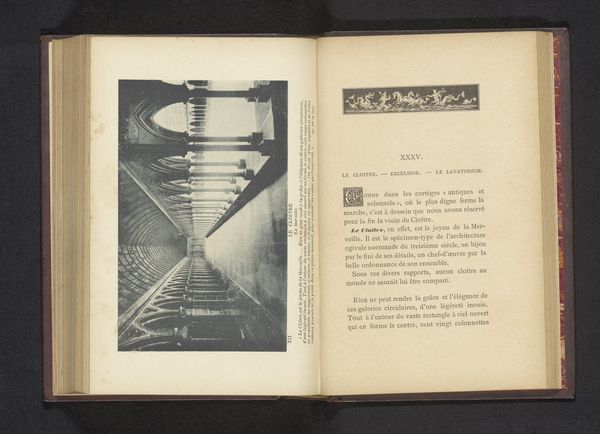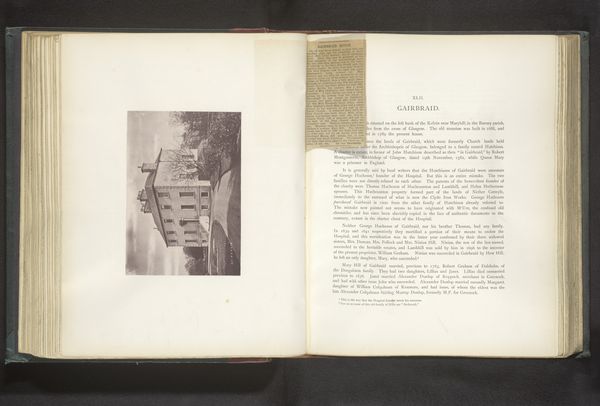
mixed-media, print, photography, albumen-print
#
mixed-media
# print
#
landscape
#
street-photography
#
photography
#
coloured pencil
#
albumen-print
Dimensions: height 91 mm, width 143 mm
Copyright: Rijks Museum: Open Domain
Curator: This is a mixed-media print titled "Straatgezicht van de Kramgasse te Bern," created before 1889. It appears to utilize an albumen print that someone has enhanced with colored pencil. It gives a photographic rendering of a street scene in Bern. Editor: The albumen and pencil give it this faded, almost dreamlike quality. The textures, from the buildings to whatever lies on that elevated walkway, are incredibly subtle. It makes the street appear deserted and ghostly. Curator: The use of the albumen process itself speaks volumes. These prints were often products of intense labor, from preparing the glass plates to the developing process. Using colored pencils enhances the details, but it also adds a layer of interpretation. We have someone choosing to modify what was once a supposedly objective record, and I find that fascinating. Editor: Absolutely. Consider what a street scene like this might mean to various people. For some, the deserted quality might invoke isolation, even precarity. Was it taken at an unusual hour? Or did the photographer intentionally choose a moment to reduce the presence of marginalized residents? What could it communicate about urban development or economic disparities that affected the city? Curator: Examining that contrast between the apparent realism offered by photography and its subsequent manipulation by hand points to a conscious aesthetic choice, possibly to highlight specific architectural or material aspects of the Kramgasse. Editor: This manipulation becomes more politically interesting when we question what street photography aims to document and whose narratives it serves. Do these enhancements serve the residents, or primarily attract wealthy residents, investors, or tourists? Who is the intended audience here? It may signal that the art is speaking to and about the culture of those with the capital or influence to reshape the urban landscape. Curator: The combination of industrial process and manual intervention mirrors the broader shifts within artistic production, as technologies and craft became interwoven, redefining the very nature of art-making. Editor: Right. Ultimately, examining its composition invites us to see that street scenes contain multifaceted social dynamics of urban experience and capital exchange, challenging our expectations around objective representation.
Comments
No comments
Be the first to comment and join the conversation on the ultimate creative platform.
